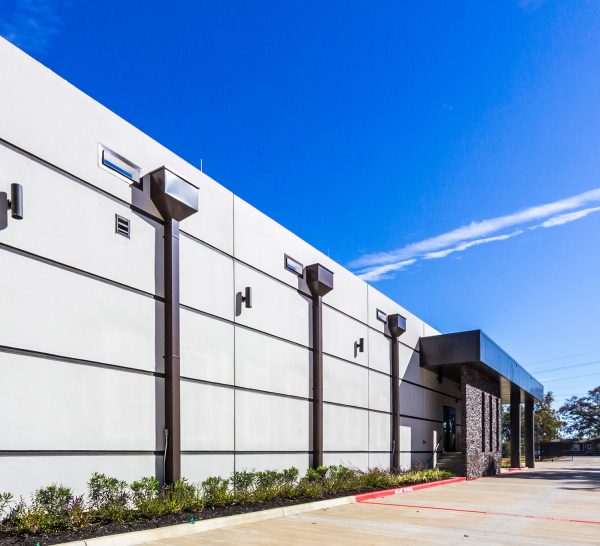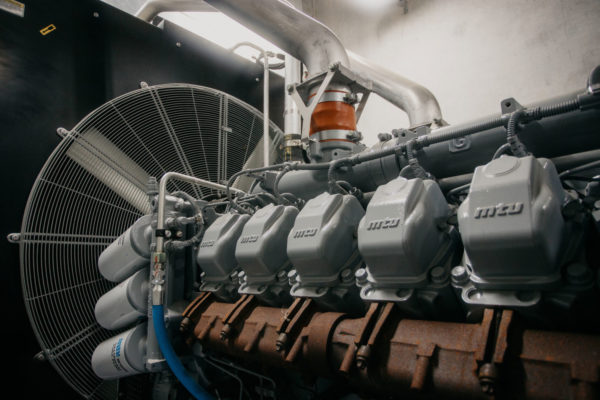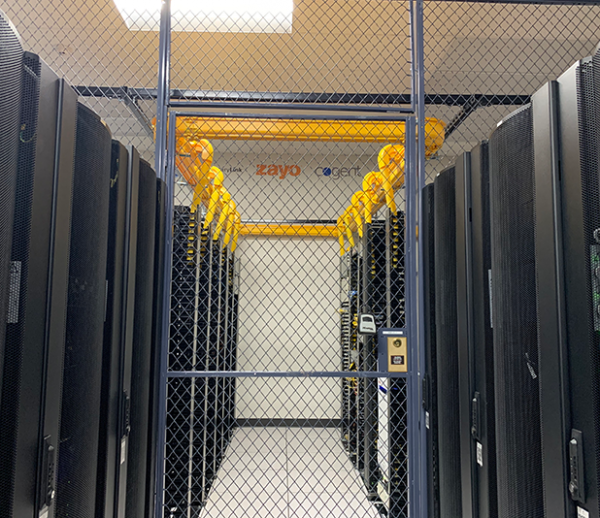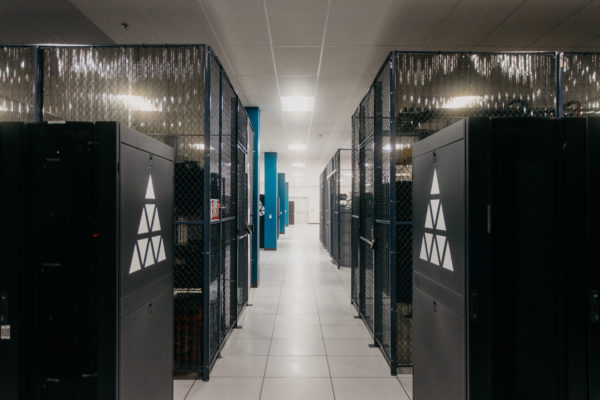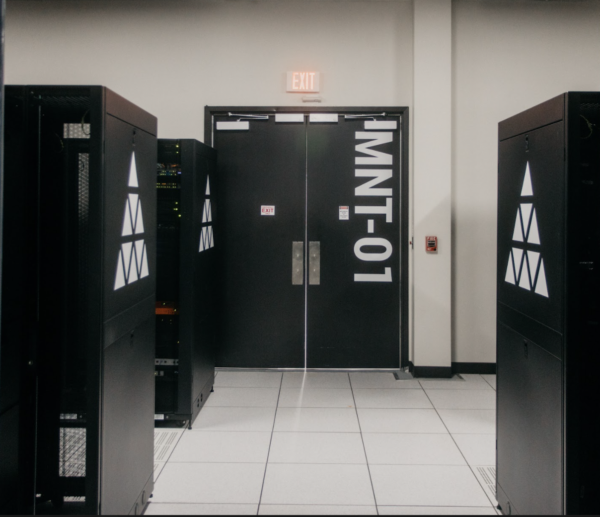Today, your business ingests more digital information than ever. To keep pace with the increase in both the scope and volume of that data, you must adopt modern facility management strategies.
Enter data center infrastructure management (DCIM), a framework that provides the tools and insights necessary to monitor, optimize, and better control the operations of your data center.
What is Data Center Infrastructure Management?
Data center infrastructure management refers to a comprehensive suite of tools and practices designed to help you oversee and optimize the physical infrastructure of your data center. They can effectively provide a holistic view of all of your business’s data center operations.
DCIM systems themselves act as centralized platforms that integrate with other IT and facility management systems. They encompass everything from optimizing the design of your data center to monitoring its environmental conditions and helping you better understand the state and efficiency of key cooling and power infrastructure.
If you know the condition of your equipment and assets, it will be easier to maintain them and extend their lifecycles. At the same time, you can also reduce the risk of unplanned downtime and keep your facility operational.
Furthermore, while DCIM primarily deals with physical equipment and infrastructure, it indirectly benefits your software and the center’s overall capacity.
How Does Data Center Infrastructure Management Work?
Data center infrastructure management uses integrated tools and software to collect and visualize data from various physical assets.
The scope and size of your specific DCIM system will vary depending on the complexity of your facility. Still, regardless of such, every platform relies on a mix of sensors and monitoring tools to gather information about physical assets.
The system will use all of that information to create detailed reports and dashboards that give you a real-time glimpse into your center’s performance and efficiency.
You won’t have to jump between different apps to monitor the state of your equipment; everything will be in one place.
Suppose, for instance, that your energy expenses suddenly skyrocket. Various issues could be behind that, including a problem with your cooling units or some underlying maintenance issue.
Old-school monitoring technologies will require a lot of digging to find the root cause of the problem.
At the same time, a DCIM system will allow you to uncover the issue faster, thereby reducing troubleshooting time and prompting a quick resolution.
Key Components of DCIM
A data center infrastructure management solution will offer the following capabilities:
Asset Management
DCIM asset management involves tracking and monitoring all of your physical and virtual assets through (at least some of) the following means:
- Servers
- Storage devices
- Networking equipment
- Software licenses
- Cooling systems
You need an accurate view of the status and location of each asset. You’ll be able to use that information to ensure all of your equipment is working properly.
Capacity Management
You must proactively manage the capacity of your facility to avoid over or under-provisioning. DCIM helps by monitoring the availability of physical space and cooling capabilities in real-time.
You can also gauge your power capacity with the software.
Environmental Monitoring
You must maintain an optimal data center environment in order to promote the efficient operation and maximum lifespan of its equipment. That means monitoring everything from temperature and humidity to airflow.
The better control you have over the center’s conditions, the easier it will be to avoid equipment failure and hit your efficiency milestones.
Energy and Power Management
DCIM systems also address one of your greatest costs: power consumption.
Through ongoing energy management, you can quickly identify and address excess consumption trends, thereby decreasing your long-term operating expenses and promoting better profitability.
Additionally, DCIM allows you to identify and resolve any abnormalities that may drive up energy costs.
Change and Configuration Management
Any time you alter the infrastructure of your data center, it can have unintended consequences on things like power consumption, cooling capacity, and overall reliability.
Therefore, change and configuration management technologies within your DCIM system will help you monitor any updates to hardware, software, or network configurations and quickly determine which changes may be causing problems.
Monitoring and Alerting
Any time one of your systems or pieces of equipment moves outside of its normal operating conditions, your DCIM system will alert your team.
For example, if a server’s temperature exceeds safe levels, a DCIM system can automatically alert the appropriate personnel.
Benefits of DCIM
Your organization can unlock a wide range of benefits by investing in a DCIM solution, such as:
Improved Efficiency
Data center infrastructure management takes facility visibility to unprecedented levels. By increasing your ability to monitor critical infrastructure, you will open the door for significant efficiency gains.
You’ll better understand sources of waste and be able to make targeted changes to address potential issues before they escalate.
Reduced Downtime
An outage that lasts even a few minutes can lead to significant consequences for your business and its clients. DCIM helps prevent surprise downtime by providing a real-time glimpse into your equipment and its functionality.
Reduced Operating Costs
There’s no question that your facility uses an abundance of power. And though there’s no way around that, you can make changes to reduce its consumption and decrease your operating costs. DCIM helps lighten your financial burden in a few different ways.
For one, you will gain a better understanding of your energy and cooling expenses. You can use this information to identify sources of waste and cut back where possible. Alongside that, continued monitoring will also reduce your labor costs.
Enhanced Security
The change management capabilities of a DCIM system promote better security and can, in turn, reduce your risk profile. You will have a centralized platform for tracking all alterations to your infrastructure and can ensure that these changes align with security best practices.
Your team will be able to prevent configuration errors or other mistakes that may lead to a breach proactively.
Better Decision-Making
Without a unified DCIM system, you will have to rely on disjointed platforms to inform your decision-making. The siloed nature of the information you receive can lead to delayed decisions or catastrophic oversights that expose your facility to undue risks.
DCIM technology promotes faster and more informed decision-making by providing a wealth of performance data at your fingertips.
Scalability
As your facility grows, so too can your DCIM solutions. You can add new sensors and monitoring hardware each time you install additional servers, cooling equipment, and other physical assets.
The cloud-based nature of modern DCIM software promotes near-infinite scalability.
Challenges in DCIM
Despite its clear advantages, data center infrastructure management is not without its own set of challenges.
Some of the barriers you may encounter when implementing a DCIM system include the following:
Complexity
Implementing a DCIM system can be complex. You will need to install the software and integrate it with a multitude of point-of-use sensors and data collection tools.
If you are working with legacy data centers that use many different types of equipment and systems, the implementation process can be particularly tedious.
Cost
The initial investment associated with a DCIM solution can be quite high. You’ll need to license the appropriate software and any necessary hardware upgrades, and the associated price tag can make it challenging to get your entire leadership team on board.
However, you can garner support for such an initiative by highlighting the likely long-term savings and efficiency gains. A well-designed DCIM system will provide a strong return on investment and condensed time to value.
Data Accuracy
The effectiveness of your data center infrastructure management systems depends on the accuracy and completeness of the data it collects.
As such, you need to create a complete inventory of all physical assets under your control and ensure that the DCIM can monitor them.
Also, you must ensure that you fully integrate the system with your other software solutions to eliminate data silos and promote overall information accuracy.
Adoption
You won’t be able to realize the full benefits of DCIM unless your team members embrace the technology and are confident in their ability to use it.
Invest in high-quality training resources and courses to encourage widespread adoption.
Change Management
Lastly, it’s important to remember that the rollout of a DCIM system, just like any new tool, can be stressful and tedious. You can proactively mitigate the effects of these hurdles by being open and honest about your plans from day one.
Keep your team in the loop and give them an opportunity to voice their concerns. Do your best to address any fears and ensure they understand the benefits of the change.
What Can DCIM Software Do?
At its core, DCIM software helps you track and manage your assets. You can maintain a real-time glimpse into environmental conditions and optimize power usage.
DCIM technology’s real-time alert capabilities ensure you never miss an important notification. As the platform gathers additional data, it can perform advanced analysis of trends and help you better understand data center performance.
One of the key advantages of the technology is that it can integrate with other IT and facilities management systems, thereby providing you with a big-picture view of your data center operations. Instead of working on numerous platforms, you will be able to manage all operations from a centralized application.
The specific scope and functionality of DCIM software will vary depending on which solution you implement and what integrations you invest in.
High-end solutions, for instance, won’t just monitor your infrastructure. They’ll also include tools that you can use for capacity planning and energy management.
How to Implement a Data Center Infrastructure Management Strategy
Here are some steps to consider when implementing DCIM in your data center:
Determine Where You Stand
First and foremost, you need to assess your current infrastructure. Create an inventory of all of your business’s physical and virtual assets, and evaluate the quality and reliability of your existing monitoring systems.
If you know where you are starting from, it will be easier to identify and close gaps with a DCIM solution.
Define Your Goals and Objectives
Next, define what you hope to achieve by incorporating a data center infrastructure management solution. Perhaps you want to reduce energy consumption or downtime, or perhaps your top priority is to improve capacity planning.
No matter what you want to achieve, a DCIM system can help you get there, but it’s important to know your goals ahead of time so you can choose the platform that is the best fit.
Use a Checklist
A data center checklist will help align your needs with a facility or framework that can meet them.
It’ll make it easy to eliminate solutions that aren’t a good fit for your business and focus on the handful of platforms that include all of your must-have features.
Plan for Integration
After you’ve chosen the solution that’s right for your business, prepare for its rollout. Work closely with your IT team and facilitate other teams to develop a detailed integration plan. Make sure to train your team on the new technology to mitigate change resistance.
Consider a phased rollout so you can test the solution and make any necessary adjustments. Once you’re confident that the system will work as intended, you can gradually roll it out across the entire facility.
The Future of DCIM
Data center infrastructure management is changing fast. A few trends are leading the way for this evolution, namely:
- Increased automation
- Integration with artificial intelligence (AI) and machine learning (ML)
- Enhanced data analytics
- Greater focus on sustainability
- Improve scalability
Automation, AI, and ML each offer the potential for significant time savings. Analytics and scalability allow the DCIM solution to meet the current needs and long-term strategic goals of your business.
Learn More About Data Center Infrastructure Management
Data center infrastructure management provides the insights and control you need to optimize operations, reduce costs, and improve reliability.
But it’s important to partner with a forward-looking DCIM solutions provider so that you can implement a dynamic system that delivers value both now and in the future.
Contact TRG Datacenters today to get a quote on custom DCIM solutions for your business.

